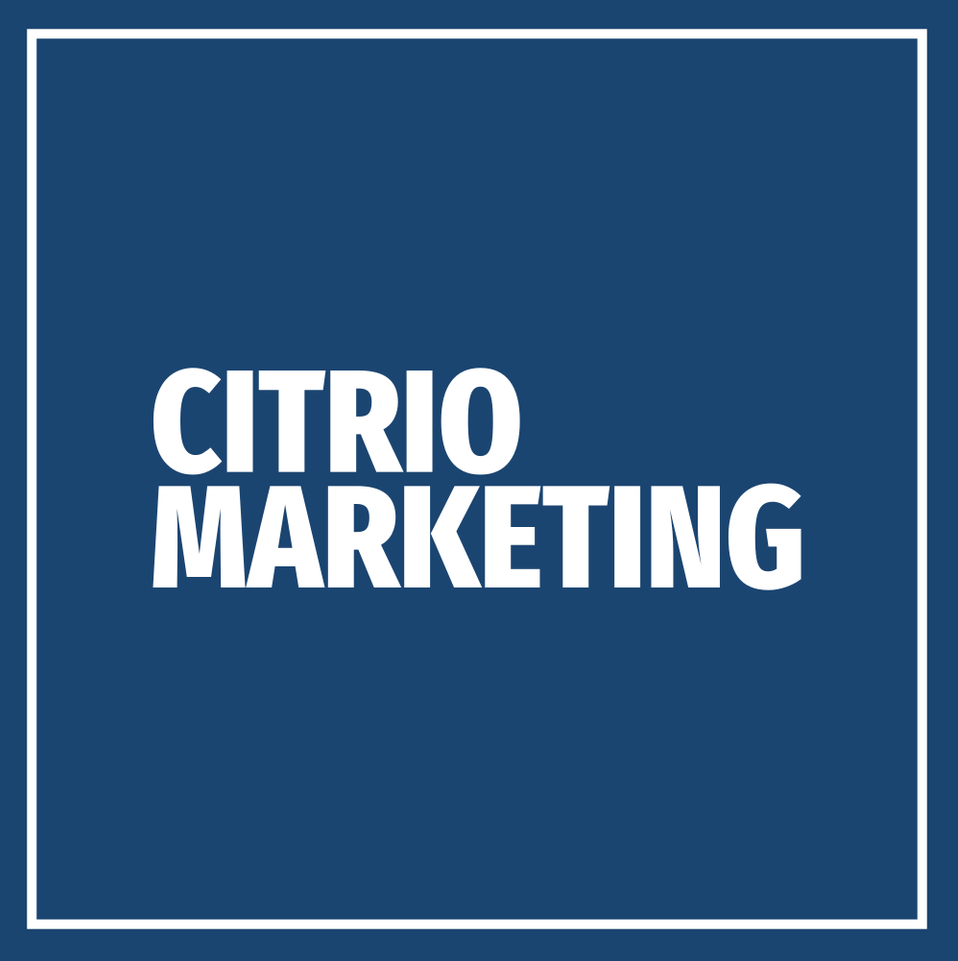
Growth isn’t just the marketing team’s job—it’s product, sales, CS, and leadership pulling in the same direction. Align goals, keep CAC in check, and build a repeatable, scalable acquisition machine. If you’re a B2B SaaS startup, your growth playbook should be 70% execution, 30% experimentation—and 100% obsessed with your user.
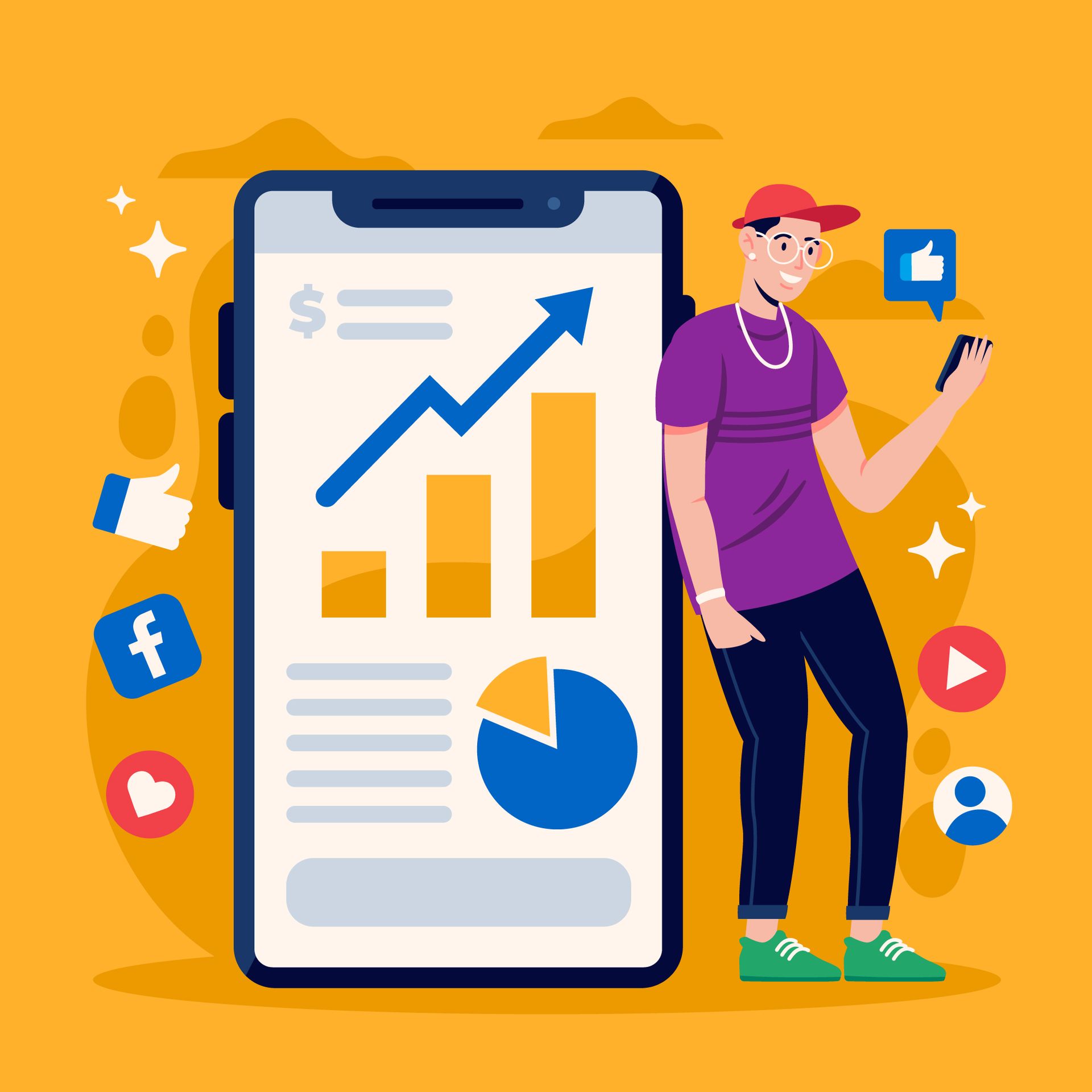
Content marketing is continuously evolving, and as we gear up for 2025, creativity, technology, and authenticity will take center stage. To stay relevant in an increasingly competitive landscape, marketers must adopt innovative strategies that resonate with audiences and drive meaningful engagements. Here’s a comprehensive look at the content marketing strategies for 2025 and how you can use them to stand out from the crowd. 1. Hyper-Personalization Takes Spotlight Audiences crave content tailored to their preferences and behaviors, and in 2025, hyper-personalization will be the gold standard. Leverage AI tools to understand your audience's browsing history, purchase behaviors, and preferences. Use these insights to deliver precise, relevant content. Dynamic content, which alters based on user interactions, like personalized landing pages or newsletter recommendations, will become increasingly essential. Action tip: Develop segmented strategies for each audience persona and integrate personalization tools into your content management system to craft unique, engaging experiences. 2. The Power of Short-Form Video Short-form video content will continue to dominate across platforms, remaining one of the most effective ways to engage audiences in bite-sized, impactful ways. Platforms like TikTok, Instagram Reels, and YouTube Shorts are perfect for telling quick stories, showcasing behind-the-scenes moments, or running tutorials. Shoppable videos will make buying seamless, blending entertainment with conversion opportunities. Action tip: Consistently post videos that deliver value in under 60 seconds, and ensure that CTAs are clear and compelling in every upload. 3. AI and Automation for Content Creation 2025 will see AI-driven tools becoming mainstream in content creation, allowing marketers to produce high-quality materials at scale without sacrificing creativity. AI bots like ChatGPT can draft blog outlines, write content, or help with brainstorming ideas for campaigns. Visual creation platforms like Canva and AI-powered video tools simplify the designs and formats for social visuals, ads, or mobile-first videos. Action tip: Mix AI support with human oversight to enhance productivity while ensuring your content retains an authentic and relatable tone. 4. Interactive Content Grows in Popularity Interactive elements will become a core tactic for brands aiming to deepen user engagement. Quizzes, polls, calculators, or AR filters grab attention and keep audiences engaged longer. Interactive infographics or personalized assessments can drive traffic while providing users with real value. Augmented reality lets brands blend digital experiences with physical ones, like trying virtual makeup or placing products in real-life settings. Action tip: Explore tools like Outgrow or Sketchfab to layer interactivity into your blog posts, emails, and social campaigns. 5. Storytelling Reinforces Brand Connection Authentic storytelling will remain a key component of content marketing as brands strive to form emotional connections with consumers. Customers connect deeply with narratives of triumph, challenges, or mission-driven initiatives. Incorporate your brand’s story into campaigns. Show real people, such as employees or satisfied customers, in your content to create authentic storytelling moments. Action tip: Include storytelling in formats like social media posts, videos, and long-form blog content about your company’s values and impact. 6. Community-Centered Campaigns By 2025, niche online communities will be even more crucial for content distribution. Consumers increasingly value interactions within smaller, like-minded groups. Platforms like Discord, Reddit, and private LinkedIn Groups are excellent for engaging specialized audiences. Tailor content to the specific interests and tone of each community to increase relevance and trust. Action tip: Join discussions as a genuine participant (rather than a marketer) by offering thoughtful, value-driven contributions. 7. Voice Search Optimization Will Matter More With voice assistants like Alexa and Google Assistant becoming more integrated into daily life, optimizing content for voice search will be critical. Voice queries tend to be more conversational and question-based (e.g., “What are the top content marketing strategies for 2025?”). Content tailored for FAQs, how-tos, or local searches will dominate the voice search space. Action tip: Use conversational phrasing and focus on answering specific questions concisely to win voice search results. 8. Repurposing Content for Maximum ROI Content in 2025 isn’t about how much you can create—it’s about how smartly you can repurpose your content for wider audiences. Turn blogs into social posts or videos: Break long-form articles into snippets for Instagram or LinkedIn. Duplicate content for multiple formats: Transform videos into podcasts or image-rich presentations for platforms like SlideShare. Action tip: Audit your content library to identify what can be updated or transformed into new, engaging formats. 9. Emotionally-Driven Content Drives Conversions Emotion will play an even bigger role in the success of your marketing efforts in 2025. Content that evokes hope, joy, curiosity, or even nostalgia will drive stronger consumer connections. Use visuals, copy, and storytelling techniques that evoke powerful, genuine emotions. Emotional resonance not only boosts shareability but also improves conversions as trust levels deepen. Action tip: Test emotional messaging across platforms to see which types of content resonate best with your target audience. 10. Data-Informed Creativity Reaches New Levels The combination of data-driven insights and creativity will take content marketing up a notch in 2025. Tools like Google Analytics 4, HubSpot, or Hotjar can help you understand the exact behaviors and preferences of your audience. Use these insights to experiment with new formats, tones, or distribution strategies that push creative boundaries while aligning with demand. Action tip: Create agility in your campaigns by continuously monitoring performance metrics and adjusting your creative approaches when needed. The Future of Content Distribution in 2025 It’s not enough to produce engaging content—you need to meet audiences precisely where they are. Here’s how content distribution will evolve in 2025: Niche communities: Focus on exclusive content for tight-knit groups on platforms like Patreon or Mighty Networks. Emerging platforms: Stay alert to new social platforms gaining traction and establish a presence early. Direct audience channels: Utilize email and SMS marketing to maintain one-to-one communication. Final Takeaway The content marketing strategies for 2025 will require a mix of innovation, authenticity, and technology. From mastering short-form video and leveraging generative AI to fostering niche communities, there’s no shortage of opportunities to engage your audience like never before. By prioritizing personalization, interactive formats, repurposing, and emotionally resonant storytelling, your marketing campaigns can remain agile, impactful, and relevant in 2025.
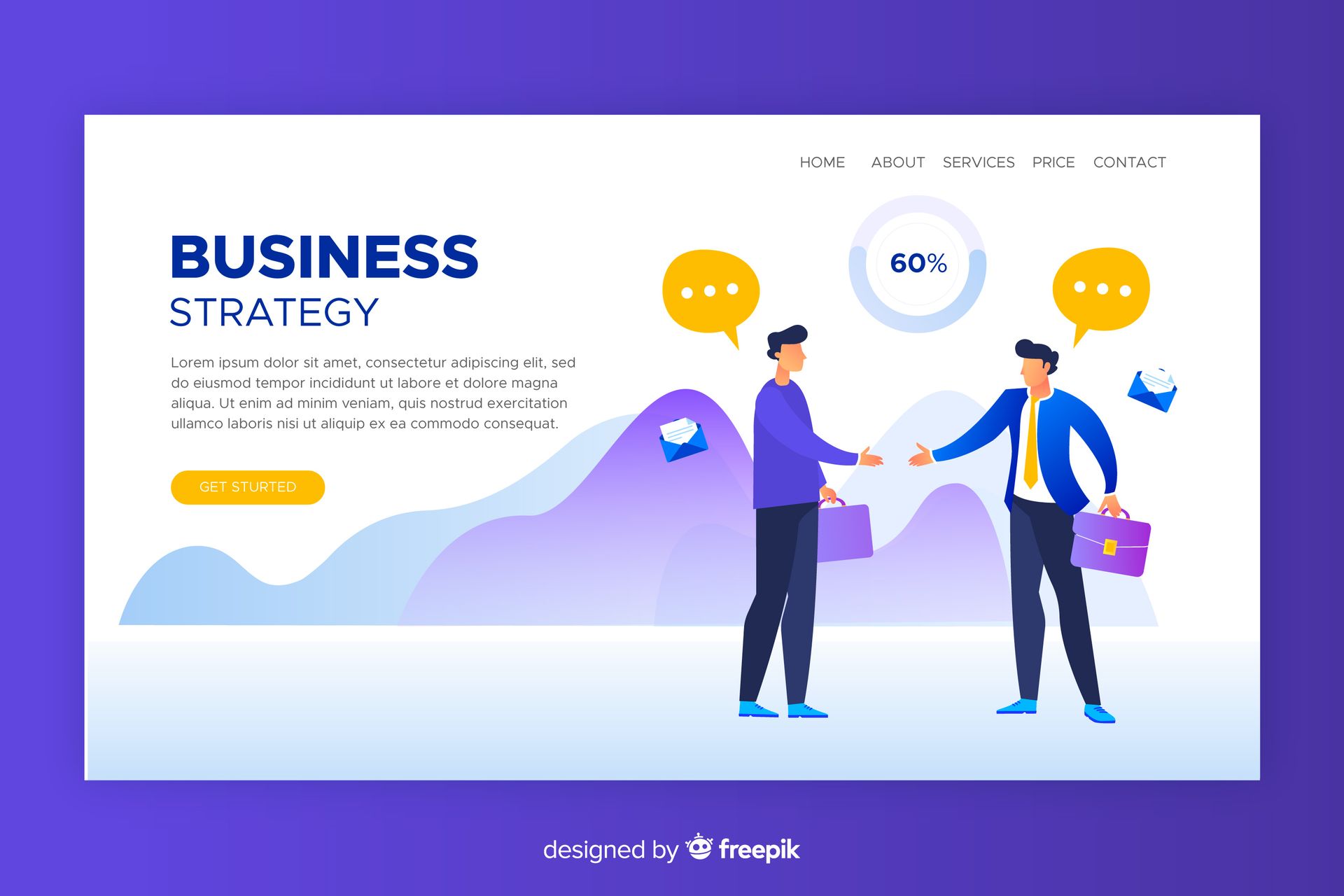
Account-based marketing (ABM) continues to be a game-changer in the B2B marketing world, allowing businesses to focus their efforts on high-value target accounts through personalized, data-driven campaigns. But as we head into 2025, emerging technologies and market shifts are shaping the next wave of ABM strategies. From AI-driven personalization to virtual events, marketers now have exciting opportunities to make their campaigns more precise, engaging, and impactful. If you want to stay ahead of the curve, here are the innovative ABM strategies set to redefine the landscape in 2025. 1. AI-Driven Personalization Next-Level Personalization Personalization has always been a pillar of ABM, but artificial intelligence (AI) is taking it to a whole new level in 2024. With the ability to process vast amounts of data quickly, AI enables marketers to create hyper-personalized experiences at scale. AI algorithms can analyze behavior, preferences, and intent data to craft messaging tailored to individual stakeholders within an account. How AI Transforms ABM Personalization Predictive Analytics for Content : AI can predict which types of content will resonate best with specific accounts based on past engagement. For example, an AI tool could determine that a white paper on supply chain optimization might appeal most to a logistics company and automatically recommend it. Dynamic Content Creation : AI tools like ChatGPT or Jasper can generate personalized email copy, landing pages, or even chatbot scripts tailored to a specific account’s unique needs. Behavior-Based Triggers : AI-powered platforms can identify triggers like website visits or social media interactions and automatically launch personalized marketing workflows in response. This technology ensures that you’re not just “personalizing,” but actually delivering what each account finds valuable based on real-time insights. Pro Tip Use AI not only for crafting personalized content but also for measuring its effectiveness. AI-driven platforms can analyze the success of your campaigns and suggest adjustments for even better performance. 2. Advanced Analytics for Holistic Account Insights Data at the Core of ABM The use of advanced analytics in ABM is set to become a non-negotiable in 2024. With the expansive availability of big data and analytics tools, marketers can gain a complete, 360-degree view of target accounts. This includes insights from intent data, buying trends, content consumption, and more. Implementing Advanced Analytics in ABM Intent Data Platforms Tools like Bombora or 6sense provide intent signals that show which companies are actively researching topics relevant to your business. This allows you to target warmer leads who are already in the decision-making phase. Lead Scoring with Predictive Models Predictive analytics can score accounts based on how likely they are to convert, ensuring you prioritize the ones with the highest potential. Customer Journey Mapping Advanced analytics can track every touchpoint a target account interacts with, allowing you to map the entire customer journey. Knowing exactly where they are in their buyer’s cycle lets you align outreach with their needs. By integrating analytics into your ABM campaigns, you’re not just guessing—you’re acting with confidence backed by data. Pro Tip Use dashboards that visualize data in real-time so your sales and marketing teams can quickly adjust their strategies based on new insights. 3. Virtual Events as a Core ABM Tactic Reimagining Engagement Through Virtual Experiences Virtual events gained traction during the pandemic, but they’re here to stay—and for a good reason. For ABM in 2024, virtual events are more than just webinars; they’re interactive arenas where you can engage decision-makers in meaningful ways. What Makes Virtual Events Perfect for ABM? High-Level Customization Use virtual events to create tailored agendas for specific accounts or industries. For instance, you can host a virtual executive roundtable for C-suite decision-makers from a few high-value accounts. On-Demand Content Record your events and provide access to on-demand content. This ensures that stakeholders who couldn’t attend live can still engage with your brand. Breakout Sessions and 1-to-1 Networking Platforms like Hopin and Zoom offer breakout room features that allow your team to network directly with key stakeholders, answering specific questions or pitching ideas tailored to their needs. What sets virtual events apart is their scalability—they can be small and exclusive for high-priority accounts or broader for mid-level ones, all while keeping costs manageable compared to in-person events. Pro Tip Pair virtual events with pre- and post-event personalized outreach, like sending customized digital invites and follow-up thank-you notes, to maintain engagement. 4. Integrated Martech Stacks Seamless Technology Integration for Optimal Results ABM in 2024 is as much about the tools you use as the strategies you deploy. Marketers are now focusing on building cohesive marketing technology (martech) stacks that integrate seamlessly—a trend critical for executing data-driven, multi-channel ABM campaigns. Must-Have Martech for ABM Success CRM Tools (like Salesforce or HubSpot): For centralizing account data and tracking engagement across the sales and marketing funnels. Marketing Automation Software (like Marketo or Pardot): To streamline workflows and automate tasks such as email nurtures and content delivery. Account Engagement Platforms (like Demandbase or RollWorks): Purpose-built for ABM, these platforms help target accounts with precision and measure campaign effectiveness. AI and Analytics Tools (like Drift or 6sense): For predictive insights and better targeting of accounts showing high levels of intent. The key is not just adopting these tools individually but ensuring they are integrated under a unified strategy. This eliminates data silos, ensuring your marketing efforts are cohesive and aligned. Pro Tip Choose martech tools that are scalable and can grow along with your ABM program. Regularly audit your stack to identify gaps or underperforming tools. 5. Sustainable Marketing as a Differentiator The Growing Role of Purpose-Driven Campaigns For 2024, sustainability is more than just a buzzword—it’s a priority for many stakeholders, including B2B decision-makers. Companies that incorporate sustainability into their ABM efforts not only differentiate themselves but also appeal to socially-conscious buyers. How to Integrate Sustainability with ABM Highlight your company’s sustainability efforts in content shared with accounts (e.g., eco-friendly supply chain practices). Use digital marketing tactics, such as virtual events or interactive content, rather than resource-heavy in-person campaigns. Create content on how your offerings can help target accounts achieve their sustainability goals (e.g., reducing energy consumption through your software). Sustainability-focused messaging is particularly impactful for large enterprises, which often have corporate social responsibility (CSR) commitments. Pro Tip Be genuine—avoid greenwashing, or exaggerating claims about sustainability. Provide measurable proof whenever possible. The Future of ABM is Here The year 2024 promises to be a pivotal time for ABM marketers. The combination of AI-driven personalization, advanced analytics, seamless multi-channel experiences, and innovative approaches like virtual events is elevating this strategy to new heights. By adopting these innovative ABM strategies, you can ensure that your campaigns stand out in a crowded market and, more importantly, deliver the results your business needs. Whether you're fine-tuning your personalization efforts or experimenting with virtual events, there’s no better time to start. These trends aren’t just optional—they’re the new standards for successful account-based marketing. Get ahead of the competition and future-proof your ABM marketing strategy today.

Artificial intelligence (AI) is no longer just a futuristic concept; it’s here, and it’s transforming how businesses approach content marketing . From automating repetitive tasks to personalizing customer experiences, AI in marketing is reshaping digital strategies, making them more efficient and impactful. For content marketers, leveraging artificial intelligence means tapping into tools and technologies that can analyze data, predict trends, and optimize campaigns. If you’re not already using AI as part of your digital marketing strategies , it might be time to rethink your approach. Here’s a closer look at how AI is revolutionizing content marketing and how you can make the most of it. How AI is Transforming Content Marketing 1. Enhanced Content Creation AI-powered tools like ChatGPT, Jasper, and Writesonic can generate content ideas, draft articles, and even create social media posts. They analyze data from millions of sources to produce on-point, relevant content. For example, if you're running a campaign for a fitness brand, AI tools can suggest trending topics like "AI-based fitness apps" or "top workout routines of 2025." While human creativity remains critical, AI makes the process faster and more efficient. 2. Advanced Personalization One of the biggest advantages of AI in marketing is the ability to deliver highly personalized content. AI analyzes customer behavior and preferences to create tailored experiences. For instance, AI algorithms can segment audiences into smaller, more specific groups based on purchase history, activity, or preferences. If a customer frequently visits your webpage for eco-friendly products, your AI system can recommend related blog posts, videos, or products they’ll likely enjoy. 3. Smarter Content Distribution AI ensures your content reaches the right people at the right time. By analyzing user habits and peak activity times, AI tools help marketers schedule posts and emails for maximum engagement. Platforms like HubSpot and Marketo automatically distribute your content across channels like email, social media, and ads based on audience insights. This strategic, data-driven approach ensures higher engagement and ROI. 4. Predictive Analytics AI empowers content marketers to make data-based predictions about future trends and user behavior. Predictive analytics tools examine historical data to answer questions like: What type of content will generate the highest engagement? Which topics will be trending next month? For example, Netflix uses AI to predict what shows or movies a user might watch next. Similarly, businesses can use AI to forecast what type of content their audience will engage with, ensuring content strategies align with customer interests. 5. Voice and Visual Content Optimization With the rise of voice search and visual platforms like Instagram and YouTube, AI is helping marketers optimize their content for these formats. AI tools can analyze voice search patterns and make recommendations to tailor your content for voice assistants like Alexa and Siri. Additionally, AI-powered platforms like Canva and Kapwing make it easier to create stunning visuals, animations, and videos tailored to your audience. 6. Automation of Repetitive Tasks Marketers often spend hours scheduling posts, analyzing data, or updating content. AI tools like Buffer, Hootsuite, and Sprinklr automate these tasks, saving time and allowing marketers to focus on strategy and creativity. For example, AI can track how your past few blog posts performed, generate a report, and even suggest ways to improve, without requiring you to manually gather data. 7. Content Performance Optimization AI doesn't just help you create content—it tells you how it's performing and how to make it better. Insights from AI tools can inform you about: Which pieces of content drive the most traffic. What topics convert readers into customers. Which areas of your content strategy need improvement. Real-time tracking and optimization ensure your content stays relevant and effective in a fast-changing digital landscape. Actionable Insights to Implement AI in Content Marketing If you’re ready to incorporate artificial intelligence into your content marketing strategies , here are some practical steps to get started: Identify Key Tools – Research and invest in AI-driven platforms that fit your marketing goals, like Grammarly for editing, Jasper for writing, or SEMrush for keyword research. Start Small – Begin with automating simple tasks like email campaigns or reports before moving on to more complex AI applications. Focus on Data Quality – AI thrives on data, so ensure the information you’re collecting from customers is accurate and comprehensive. Experiment with Personalization – Test personalized emails or recommendations for different audience segments and track performance. Invest in Training – Teach your team how to use AI effectively to balance automation with human creativity. Final Thoughts AI is no longer just a tool—it’s a powerhouse transforming the future of content marketing . By incorporating AI in marketing strategies , businesses can automate processes, refine personalization, and make data-driven decisions that lead to measurable results. But while AI can enhance productivity and efficiency, it works best in partnership with human creativity and critical thinking. Marketers who combine innovative tools with strategic insights will lead the way in this new era of digital marketing strategies . Are you ready to future-proof your content marketing with artificial intelligence? Contact us today to create a smarter, AI-driven marketing strategy that sets your business apart!

Account-based marketing (ABM) has emerged as a critical strategy for B2B marketers looking to maximize return on investment (ROI) by tailoring personalized campaigns for high-value targets. Unlike traditional broad-based marketing, ABM flips the script. It focuses on quality over quantity, strategically aligning sales and marketing to capture and nurture key accounts. If you want to fine-tune your approach, here’s an in-depth look at five core strategies to elevate your ABM efforts. 1. Personalization Why Personalization is Key Personalization lies at the heart of every effective ABM campaign. By delivering tailored content and experiences, you foster trust and deepen relationships with key decision-makers within your target accounts. The key is simple—make your audience feel understood. For example, rather than casting a wide net with generic email campaigns, successful ABM campaigns craft messages specific to the pain points and goals of an individual account. Personalized emails, custom videos, or even targeted webinars ensure that you’re speaking directly to your audience, not at them. How to Implement Personalization Develop buyer personas with insights gathered from thorough research. Create account-specific content such as case studies highlighting similar challenges your company helped solve. Use tools like personalized landing pages, emails, and video campaigns to connect with each account directly. When done right, personalization boosts engagement rates by making it clear to your audience that your product or service is tailored to meet their unique needs. 2. Adopt a Multi-Channel Approach Diversify How You Engage Sticking to one medium is no longer enough. Today’s decision-makers operate across multiple channels, including email, social media, search engines, and even offline settings. ABM campaigns that use a mix of digital and non-digital methods achieve much better results because they meet prospects where they are. What a Multi-Channel Approach Looks Like in ABM Use social media platforms like LinkedIn to share relevant content and connect with key stakeholders. Paid ads on LinkedIn allow you to hyper-focus on job roles within specific companies. Combine digital efforts with traditional tactics like personalized direct mail (e.g., sending custom-branded kits or handwritten notes). Run programmatic retargeting ads that follow decision-makers from one platform to another. Cross-channel cohesion ensures that your audience experiences consistent messaging no matter where they encounter your brand, enhancing your campaign reach while keeping your brand top-of-mind. 3. Sales and Marketing Alignment Breaking Down the Silos The success of ABM hinges on the synergy between sales and marketing teams. Both departments must operate as a cohesive unit to deliver a unified experience for each target account. This alignment ensures that marketing efforts are focused on generating qualified leads for sales, while sales tailors its approach based on insights from marketing campaigns. Key Steps for Alignment Predictable Scoring and Handoffs : Together, create a consistent scoring system to define when an account is ‘sales-ready.’ Regular Communication : Hold joint meetings to ensure both teams share insights and challenges. Collaborative tools like Slack or shared dashboards can foster open communication. Agreed-Upon Metrics : Align on KPIs, such as engagement rates, pipeline contribution, and revenue from target accounts. This alignment helps minimize wasted effort and ensures consistent communication at every step of the buyer’s journey. Unified teams create a seamless experience for customers, making it easier to close deals. 4. Leverage Data-Driven Targeting Getting to Know Your Best Prospects Not all accounts are created equal. Data-driven targeting involves taking a deep dive into the metrics and analytics that reveal where your ABM efforts will yield the highest returns. This ensures you’re not wasting time on accounts unlikely to make an impact on your bottom line. Steps to Use Data Effectively in ABM Identify High-Value Accounts Use predictive analytics and intent data to zero in on companies most likely to need your offerings. Tools like CRM platforms, marketing automation software, and third-party data providers can help identify prospects that align with your ideal customer profile. Map Decision-Makers Large accounts often involve multiple stakeholders. Understand who the decision-makers and influencers are in each company. Analyze Engagement Metrics like website traffic, content engagement (e.g., white paper downloads), and email opens can help you qualify leads as ready to receive personalized outreach. When targeting the right accounts at the right time with the right message, your marketing becomes far more effective—and your close rates increase substantially. 5. Use a Tiered Account Strategy Prioritize Wisely An effective ABM campaign doesn’t treat all accounts equally. Instead, a tiered strategy enables you to allocate resources based on the potential value and significance of each account. The 3-Tiered Approach Tier 1 – Strategic Accounts These are high-value accounts with the potential for massive ROI. Focus maximum effort here, using one-on-one engagements like custom proposals, personalized events, or even face-to-face meetings. Tier 2 – Mid-Level Accounts These accounts hold moderate potential for revenue. Group them into clusters based on similar industry verticals or challenges and deliver semi-personalized content. Tier 3 – Scalable Accounts These accounts represent lower-value opportunities. Automate your outreach with broader messaging campaigns, such as email nurtures and targeted ads. When you tailor your approach by clearly defining account tiers, it allows you to maximize productivity while keeping a sharp focus on mission-critical customers. Why ABM Matters for B2B Marketers ABM is no longer just an option—it’s a must for B2B marketers who want results. Personalization and data-driven targeting allow you to create meaningful relationships with key accounts, while ensuring your marketing efforts produce tangible business outcomes. With its focus on precision and quality, ABM consistently delivers better engagement rates and higher ROI than traditional marketing approaches. But don’t forget—the backbone of an effective ABM strategy is execution. It requires dedicated planning, tools, and teamwork to consistently meet the demands of your high-value target accounts. Consider taking the leap into this powerful approach by starting small with a pilot ABM initiative. Study the results, iterate, and scale up from there. When done right, ABM has the power to transform your business into a tightly-focused lead-generating machine. Start Your ABM Journey Whether it's personalization, multi-channel outreach, sales and marketing alignment, data-informed targeting, or a tiered account strategy, implementing these tried-and-true ABM strategies pays dividends. The B2B marketing space is competitive, but a strategic ABM plan can be your secret weapon for winning the race. By zeroing in on what matters most—your high-value accounts—you’ll unlock long-term growth, enhanced customer loyalty, and a greater share of the market. Isn’t it time you start using ABM strategies that work?
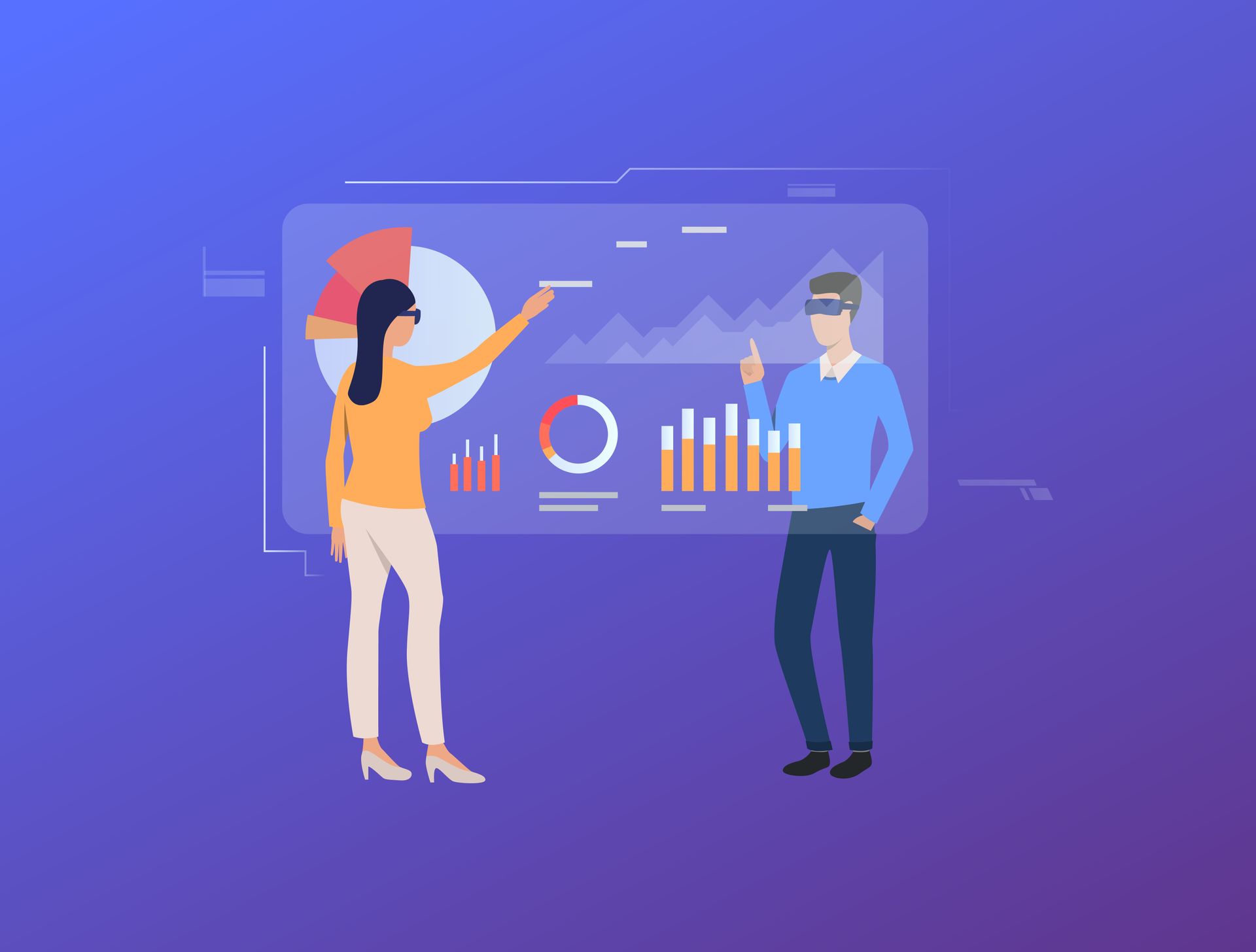
As we approach 2025, the digital marketing landscape is brimming with opportunities driven by rapid technological advancements and shifting consumer behaviors. To stay ahead, businesses must adapt to emerging marketing technologies, explore new trends, and rethink their strategies. Here’s a detailed look at the digital marketing trends for 2025 and how you can leverage them to elevate your marketing game. 1. Generative AI Takes Creativity to the Next Level Generative AI is no longer just about efficiency—it’s becoming a vital tool for creativity. From crafting hyper-personalized email content to producing entire marketing campaigns, AI-driven tools are revolutionizing the way marketers engage their audiences. Creative Campaign Development: AI tools like DALL·E and MidJourney are making it easier to create unique designs, ads, and illustrations. Advanced Personalization: AI-driven dynamic content creation adjusts messaging in real-time based on user interactions, ensuring maximum relevance. Action tip: Incorporate generative AI platforms into your content and creative operations. Experiment with AI-powered tools for ad design, social media posts, and video production to save time while elevating quality. 2. Enhanced Focus on Voice and Visual Search By 2025, voice-enabled devices and visual search tools will see widespread adoption as technology becomes more intuitive. Consumers increasingly use these features to browse, shop, and find recommendations. Voice search queries are becoming more conversational, which calls for SEO strategies that include long-tail keywords and structured data for FAQ-rich snippets. Visual search tools like Google Lens and Pinterest Lens are empowering users to search through photos instead of text. Action tip: Optimize your website for both voice and visual search. Add alt tags to images, ensure metadata is accurate, and include conversational language in your content to capture these audiences. 3. The Expansion of Metaverse Marketing The metaverse is evolving into a significant frontier for marketers. Virtual worlds, 3D avatars, and immersive experiences are attracting brands eager to make their presence known in this dynamic space. Brands are hosting virtual events, launching gamified campaigns, and creating virtual stores to interact with digital-native audiences. The metaverse is particularly appealing to Gen Z and Millennials, who spend a growing amount of time on platforms like Decentraland or Roblox. Action tip: Begin exploring smaller-scale metaverse campaigns, such as virtual product showcases or interactive 3D experiences that allow your brand to stand out. 4. Sustainability Marketing Gains Momentum With an increased focus on environmental and social responsibility, consumers are looking to align with brands that prioritize sustainability. Ethical branding will not only influence purchases but also foster brand loyalty. 78% of consumers now prefer sustainable brands. Marketing campaigns that demonstrate positive environmental and community impact will resonate. Green certifications and corporate responsibility initiatives will play a bigger role in marketing strategies in 2025. Action tip: Create content highlighting your sustainability initiatives and demonstrate authenticity through transparent reports or partnerships with environmental organizations. 5. The Rise of Predictive Analytics in Marketing Predictive analytics will become an indispensable tool for marketers in 2025. Using customer data patterns and trends, businesses can accurately forecast consumer behaviors and craft highly targeted campaigns. Predictive models help businesses determine which leads are most likely to convert, improving ROI. Advanced analytics can tailor offers, discounts, and recommendations with pinpoint accuracy. Action tip: Implement predictive analytics software to improve campaign performance and enhance customer experience with data-driven personalization. 6. Video Commerce Booms Across Platforms Video marketing isn’t just thriving; it’s evolving into a direct sales channel. The integration of video content with e-commerce is reshaping the buyer’s path to purchase. Platforms like Instagram and TikTok now offer shoppable videos that allow customers to buy directly while watching. Live-stream shopping experiences are becoming popular in both Western and Asian markets, creating real-time connections with shoppers. Action tip: Invest in shoppable video content and live-streaming sessions featuring product demonstrations, Q&A interactions, or celebrity hosts to engage your audience. 7. First-Party Data Becomes a Core Asset With third-party cookies becoming obsolete, businesses must shift focus toward collecting and managing their own data. First-party data remains the most reliable way to understand and connect with customers. Email subscriptions, loyalty programs, and mobile apps will grow as primary sources of consumer insights. Zero-party data collection, where users willingly share preferences, will also become a valuable marketing asset. Action tip: Build strong customer relationships by offering incentives for providing data, such as exclusive discounts or personalized experiences. 8. Growth of Hyper-Personalized Mobile Experiences Mobile experiences will continue to dominate, with hyper-personalization becoming the norm. Apps, mobile-friendly websites, and digital wallets are key tools to amplify mobile engagement. Consumers expect convenience, from simplified mobile payment methods to ultra-fast page load speeds and customized app notifications. Upgrades in AI tech allow for even deeper personalization, such as adaptive app interfaces or location-based content. Action tip: Prioritize mobile optimization—ensure every aspect of your digital strategy, from ads to landing pages, is seamless and completely tailored for mobile users. 9. Community-Driven Social Platforms Gain Trust Trust in traditional social media platforms is waning, and niche online communities are rising as the go-to space for authentic interactions. Collaborative and intimate group settings foster deeper brand connections. Platforms like Discord, Reddit, and WhatsApp Communities will continue to thrive. Peer-to-peer content and user-generated campaigns within these smaller groups will build trust and loyalty. Action tip: Expand your content distribution into select online communities where your target audience is actively engaged. 10. Progressive Web Apps (PWAs) Blur the Lines Between Web and App PWAs are web-based apps delivering an app-like experience directly from browsers. With improved speed, offline functionality, and features like push notifications, PWAs are growing in popularity. PWAs help businesses deliver premium user experiences without consumers needing to download anything. They reduce friction while enhancing functionality, significantly boosting conversion rates. Action tip: Invest in developing your own PWA to offer a seamless cross-platform experience for your audience. Final Thoughts on the Future of Digital Marketing 2025 The digital marketing trends for 2025 promise to revolutionize the way businesses engage and convert their audiences. With AI unlocking new creative opportunities, immersive technologies such as AR and metaverse marketing evolving rapidly, and data-driven personalization taking engagement to unmatched levels, it’s clear that staying agile and informed is essential. Whether it’s tapping into voice search, leveraging predictive analytics, or adopting community-driven strategies, the time to start preparing for these trends is now. Elevate Your Digital Strategy for 2025: Need help navigating and implementing cutting-edge technologies? Our team at Citrio Marketing specializes in crafting future-proof strategies tailored to the latest trends. Get in touch today for a consultation!
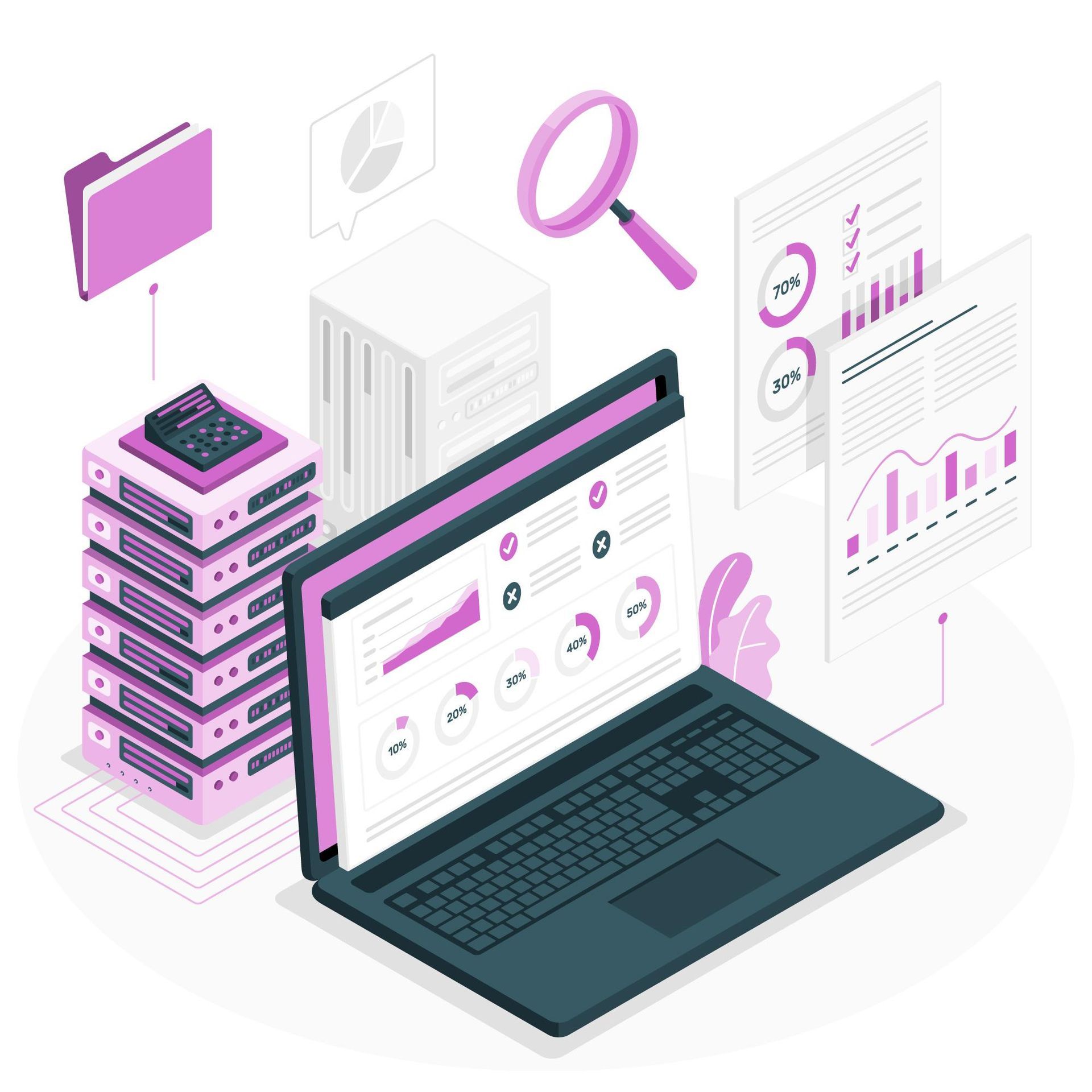
Businesses today are constantly searching for ways to make their marketing efforts more effective and efficient. This is where data-driven marketing becomes invaluable. By relying on analytics and customer insights , businesses can target their audience with precision, craft personalized campaigns, and, most importantly, boost their ROI (return on investment). If you're not leveraging data in your digital marketing strategies , you may be missing out on opportunities to cut costs, increase engagement, and see measurable results. Let's explore how data-driven marketing can transform your approach and maximize your ROI. Why Data-Driven Marketing is Essential Data-driven marketing taps into real numbers and information—like audience behavior, preferences, and performance metrics—to shape campaigns. It's not about guessing what your audience wants; it’s about knowing. When you focus on data, marketing decisions become actionable and impactful. For instance: You can identify which channels bring in the most leads. You'll know what type of content resonates with specific segments of your audience. You can optimize campaigns in real-time based on what works and what doesn’t. Ultimately, this means you’re spending money wisely while consistently improving your outcomes. Strategies to Maximize ROI with Data-Driven Marketing 1. Leverage Advanced Analytics Every successful data-driven campaign starts and ends with effective analytics. Tools like Google Analytics, HubSpot, and Adobe Analytics allow businesses to track key performance indicators (KPIs), monitor customer behavior, and break down what's driving sales or engagement. For example, identifying high-performing landing pages or user drop-off points in a sales funnel helps you refine your digital marketing strategy for better results. 2. Tap Into Customer Insights Understanding your audience is critical for effective marketing. Use tools like surveys, feedback forms, or CRM systems to gather customer insights . For instance, track buying patterns and personalize your messaging based on your customers' preferences. If you know a segment of your audience opens emails about discounts but skips emails about industry news, you can shift your approach to better connect with them. 3. Personalize Your Campaigns Personalization is a game-changer for customer engagement. Craft ads, emails, and content based on specific audience segments or even individual preferences. Dynamic email marketing campaigns that adjust their content based on user behavior often boast higher open and conversion rates. Similarly, integrating personalization into social media ad targeting can capture the attention of the right audience at the right moment. 4. Adopt Predictive Analytics Predictive analytics use existing data to forecast future trends and customer actions. This allows you to stay ahead of the curve. For example: Predicting which products customers are likely to purchase next. Forecasting trends in engagement during specific times of the year. By integrating tools like machine learning and AI into your analytics workflow, you can make smarter decisions that push your ROI higher. 5. Optimize Ad Spend with Data Pay-per-click (PPC) advertising can burn through budgets quickly if it isn’t optimized. Using a data-driven approach ensures your ad spend is focused on campaigns and audiences that drive results. Platforms like Google Ads and Facebook Ads Manager provide rich insights into ad performance. Refine your targeting by analyzing click-through rates (CTR), cost-per-lead (CPL), or conversions—and stop pouring resources into ads that don’t deliver. 6. A/B Test Everything A/B testing removes uncertainty from marketing decisions. Whether it’s subject lines for an email campaign, images for ads, or messaging on landing pages, testing variations ensures you’re optimizing for what works best. For maximum ROI, implement a culture of constant testing and improvement within your digital marketing strategies . 7. Combine Data with Automation Marketing automation tools like Marketo, ActiveCampaign, or Mailchimp allow businesses to act on data efficiently. Automation streamlines repetitive tasks like sending follow-up emails or scheduling social media posts. But what really sets automation apart is the ability to deliver personalized, data-backed content at scale. When combined, data and automation ensure every dollar you spend is targeted toward what produces results. Actionable Insights to Boost ROI Here’s how to apply these strategies immediately: Audit Your Current Analytics – Review what you’re tracking and ensure you’re collecting relevant, actionable data. Use Segmenting Tools – Break your audience down into groups based on behavior, demographics, or past interactions. Test Before Scaling – Experiment with smaller campaigns before rolling them out to larger audiences to minimize wasted spend. Focus on Retention – Building long-term relationships with loyal customers often yields a stronger ROI than acquiring new ones. Final Thoughts Mastering data-driven marketing means making smarter decisions, spending wisely, and crafting campaigns that hit the mark every time. By focusing on customer insights, leveraging analytics, and continuously optimizing your efforts, your business can achieve unparalleled results. 2025 and beyond are set to be the years of smarter marketing. Are you ready to join the data revolution and experience the difference it makes in your ROI ? Contact us today to build customized digital marketing strategies that drive measurable success!

Social media has become an indispensable tool for businesses looking to grow, connect with audiences, and build meaningful relationships. As we approach 2025, the role of social media in driving business success is set to expand even further. With billions of users engaging daily on platforms like Instagram, LinkedIn, TikTok, and Facebook, the opportunities for business growth through effective social media marketing are limitless. The right approach can boost brand awareness , increase engagement, and help you craft a winning digital strategy . Here’s how to stay ahead of the game and harness the power of social media for business growth in 2025. Strategies to Grow Your Business with Social Media 1. Prioritize Authentic and Engaging Content People on social media are drawn to stories and authenticity. Brands that focus on creating relatable, human-centric content are the ones that thrive. For instance, behind-the-scenes looks, success stories, and employee highlights can humanize your brand. Pair these with visually striking posts, engaging captions, and calls-to-action to foster engagement . Interactive content like polls, quizzes, and live Q&A sessions can also spark meaningful interactions. Remember, the better you connect with your audience, the more they’ll trust your brand. 2. Use Video to Tell Your Brand’s Story Video content is rapidly growing as one of the most engaging forms of communication, and it will continue to dominate in 2025. Platforms like TikTok, YouTube, and Instagram offer incredible opportunities to share everything from quick tips to product demos. Focus on creating short-form videos with high entertainment value and clear messaging about your products or services. Livestreams are another powerful way to connect with your audience in real time, showcasing your authenticity and expertise. 3. Optimize for Every Platform Not all platforms are the same, and your content strategy shouldn’t be one-size-fits-all. Each social platform caters to different demographics and engagement styles: LinkedIn is ideal for B2B connections and thought leadership. Instagram and TikTok excel in visual storytelling and reaching younger audiences. Facebook offers strong community-building tools and advertising. Tailor your posts for each platform to maximize reach and attract the right audience, ensuring seamless alignment with your overall digital strategy . 4. Leverage Social Commerce The rise of social commerce continues to revolutionize how consumers discover and purchase products. Platforms like Instagram Shops, Facebook Marketplace, and TikTok's shopping features allow customers to make purchases directly without leaving the app. Seamlessly integrating shopping options into your social media presence not only enhances the customer experience but also boosts sales with minimal friction. 5. Harness the Power of Influencers Influencer marketing continues to be one of the most effective ways to enhance brand awareness and connect with target audiences. Collaborating with well-aligned influencers can expand your reach, build credibility, and drive sales. Be strategic—micro-influencers, in particular, often have higher engagement rates and more loyal audiences than larger influencers. 6. Focus on Consistency and Analytics Consistency in your posting schedule ensures your brand stays top of mind. Create a content calendar and stick to it. Additionally, use analytics tools to track your performance—metrics like engagement rate and ROI can reveal what content works best. Utilize these insights to refine your approach, ensuring you’re always moving in the right direction. 7. Take Advantage of Paid Social Ads Organic reach can only go so far. Investing in paid social media advertising ensures your content gets noticed by the right audience. Tools on platforms like Facebook Ads Manager or LinkedIn Campaign Manager allow you to create highly targeted campaigns, driving leads and conversions while maximizing your marketing budget. Actionable Insights to Succeed in 2025 To make the most of social media and see measurable business growth , start implementing these steps today: Diversify Your Content – Explore formats like video, interactive posts, and live streams to keep your audience engaged. Stay Data-Driven – Use analytics to inform your social media marketing decisions, creating content that truly resonates with your audience. Engage with Your Audience – Respond to comments, join conversations, and interact with your followers to build loyalty. Experiment with Paid Ads – Boost brand visibility by testing targeted paid campaigns on platforms most relevant to your target audience. Collaborate with Influencers – Choose influencers who align with your brand values and track the results of these partnerships. Final Thoughts Social media isn’t just a trend—it’s a powerful tool for growth. By leveraging evolving features like social commerce, video content, and AI-powered personalization, businesses can drive greater engagement , boost brand awareness , and achieve unmatched business growth . Staying adaptable and proactive with your digital strategy will set you apart in 2025 and beyond. Are you ready to maximize your social media potential? Reach out to us today to build a tailored social media marketing plan that elevates your business to new heights!

The digital marketing landscape is constantly evolving, and staying ahead of the curve is essential for businesses looking to thrive. With 2025 on the horizon, understanding the emerging trends and strategies can give your brand the competitive edge it needs. Whether you're focusing on SEO , leveraging social media , or refining your online marketing strategies , these upcoming trends highlight where digital marketing is headed and how to stay ahead. Key Digital Marketing Trends to Watch in 2025 1. Voice Search is Revolutionizing SEO The way people search online is changing, with voice search becoming more common than ever. By 2025, nearly half of all online searches are expected to be voice-based. This means marketers will need to optimize content for conversational queries and long-tail keywords to ensure visibility. Incorporating natural language into your SEO strategy will make your brand voice-search friendly and help you connect with your audience seamlessly. 2. Personalization Through AI and Data Personalization will dominate content marketing and customer engagement strategies in 2025. With the help of AI and advanced analytics, businesses can deliver hyper-personalized experiences tailored to individual preferences. From creating custom email campaigns to showing targeted ads, leveraging AI tools ensures your messaging hits the mark every time. 3. The Continued Rise of Video Content Video content will remain a powerhouse in the digital world, but with a twist. Short-form videos, live streaming, and interactive formats will eclipse traditional lengthy productions. Platforms like TikTok, Instagram Reels, and YouTube Shorts are ideal for building authentic connections with your audience. For brands looking to stand out, investing in dynamic, shareable video content will be essential. 4. Social Commerce Will Drive Conversions Social media platforms are no longer just places for engagement; they’re becoming full-fledged shopping destinations. Social commerce , integrated with platforms like Instagram, Facebook, and TikTok, allows seamless purchasing directly within the apps. This trend blurs the line between content and commerce, making social media an essential part of every online marketing strategy . 5. Sustainability in Marketing Consumers are increasingly leaning toward brands that prioritize sustainability. By 2025, incorporating eco-friendly practices into marketing campaigns will become a critical way to win customer loyalty. Highlighting your company's commitment to green initiatives through content marketing and transparent messaging will resonate with a growing segment of conscious consumers. 6. The Power of Interactive Content Engagement matters more than ever, which is why interactive content like polls, quizzes, and augmented reality (AR) filters will be game-changers in 2025. This type of content not only captures attention but also keeps users on your site for longer, boosting engagement metrics and SEO performance. 7. First-Party Data Becomes the Norm With privacy laws tightening and third-party cookies on their way out, businesses will need to focus on gathering and utilizing first-party data . Building trust while collecting insights directly from your audience ensures you'll have accurate data to refine your online marketing strategies and create targeted campaigns. Actionable Insights to Prepare for 2025 To capitalize on these trends, start integrating them into your digital strategy today. Here's how you can get started: Optimize for Voice Search Review your website content and blog posts to ensure they're conversational and optimized for natural language queries. Invest in Personalization Tools Leverage AI-driven tools to analyze customer behavior and deliver tailored experiences across your marketing channels. Create Snackable Video Content Design videos that are easy to consume and share, focusing on platforms where your audience spends the most time. Build Trust and Collect First-Party Data Use engaging lead magnets like downloadable guides or exclusive content to gather data directly from your audience. Highlight Sustainability Efforts Share your eco-friendly practices through social media, blogs, and other content pieces to appeal to conscious consumers. Final Thoughts The digital marketing landscape in 2025 will require agility, creativity, and a deep understanding of consumer preferences. By staying on top of these trends—voice search, personalization, video content, and more—you can ensure your brand not only adapts but thrives. Now is the time to revamp your approach to SEO , invest in smarter social media strategies , and innovate your content marketing efforts to stay ahead of the curve. Are you ready to take your digital marketing to the next level? Connect with us today, and let's future-proof your online presence!
